Mathematical Modeling of the Electrophysical Properties of a Layered Nanocomposite Based on Silicon with an Ordered Structure
Abstract
:1. Introduction
2. Materials and Methods
- Chaotically located spherical inclusions in the matrix [25]:
- An ordered cubic system of spherical inclusions in a matrix [26]:
- Chaotically located cylindrical inclusions in the matrix under the influence of the field along the axes of the cylinders [27]:
- Chaotically located cylindrical inclusions in the matrix under the influence of a field perpendicularly directed relative to the axes of the cylinders [28]:
3. Results
4. Conclusions
- chaotically located spherical inclusions in the matrix;
- ordered cubic system of spherical inclusions in the matrix;
- randomly located cylindrical inclusions in the matrix under the influence of the field along the axes of the cylinders;
- close-packed cylindrical inclusions in the matrix under the influence of a field perpendicularly directed relative to the axes of the cylinders;
- randomly located cylindrical inclusions in the matrix under the influence of a field perpendicular to the axes of the cylinders.
Author Contributions
Funding
Institutional Review Board Statement
Informed Consent Statement
Data Availability Statement
Conflicts of Interest
References
- Krakhmalev, O.; Krakhmalev, N.; Gataullin, S.; Makarenko, I.; Nikitin, P.; Serdechnyy, D.; Liang, K.; Korchagin, S. Mathematics model for 6-DOF joints manipulation robots. Mathematics 2021, 9, 2828. [Google Scholar] [CrossRef]
- Terin, D.; Kardash, M.; Korchagin, S.; Tsyplyayev, S.; Cherkasov, V.; Druzhinina, T. Features of thermomechanical stability of anionic–cation exchange matrix “polikon ac” on viscose non-woven materials. Membranes 2021, 11, 734. [Google Scholar] [CrossRef] [PubMed]
- Tretyakov, Y.D. Ceramics in the past, present, and future. Sorovsk Educ. J. 1998, 6, 53–59. [Google Scholar]
- Travkin, P.G.; Vorontsova, N.V.; Vysotsky, S.A.; Lenshin, A.S.; Spivak, Y.M.; Moshnikov, V.A. Investigation of the regularities of the formation of the structure of porous silicon in multistage modes of electrochemical etching. Izv. SPbGETU LETI 2011, 4, 3–5. [Google Scholar]
- Milosev, I.; Kapun, B. He corrosion resistance of Nitinol alloy in simulate physiological solutions: Part 1: The effect of surface preparation. Mater. Sci. Eng. 2012, 32, 1087–1090. [Google Scholar] [CrossRef]
- Buyakova, S.P.; Khlusov, I.A.; Kulkov, S.N. Porous zirconium ceramics for bone endoprosthetics. Phys. Mesomech. 2004, 7, 127–130. [Google Scholar]
- Aseev, A.L.; Popov, V.P.; Volodin, V.P.; Maryutin, V.N. Prospects for the Use of Silicon-on-Insulator Structures in Micro-Nanoelectronics and Microsystem Technology. Nano- and Microsystem Technology; New Technologies: Moscow, Russia, 2002; pp. 23–29. [Google Scholar]
- Nikitin, A.S. Prospects for the use of composite materials. Econ. Life 2012, 4, 6. [Google Scholar]
- Kim, R.P.; Korchagin, S.A. Mathematical and computer simulation of the electrophysical properties of a multicellular structure exposed to nanosecond electrical pulses. Izv. Saratov Univ. New Ser. Ser. Math. Mech. Inform. 2021, 21, 259–266. [Google Scholar] [CrossRef]
- Korchagin, S.A.; Klinaev, Y.V.; Serdechnyy, D.V.; Terin, D.V. Software and Digital Methods in the Natural Experiment for the Research of Dielectric Permeability of Nanocomposites. In Proceedings of the International Conference on Actual Problems of Electron Devices Engineering, APEDE 2018, Saratov, Russia, 27–28 September 2018; pp. 262–265. [Google Scholar]
- Korchagin, S.; Romanova, E.; Serdechnyy, D.; Nikitin, P.; Dolgov, V.; Feklin, V. Mathematical modeling of layered nanocomposite of fractal structure. Mathematics 2021, 9, 1541. [Google Scholar] [CrossRef]
- Werner, D.H. An overview of fractal antenna engineering research. IEEE Antennas Propag. Mag. 2003, 45, 38–57. [Google Scholar] [CrossRef] [Green Version]
- Pavlik, R. Cyclostationary and correlation based signal detection for harmonic radar systems. In Proceedings of the 2016 International Symposium on Fundamentals of Electrical Engineering (ISFEE), Bucharest, Romania, 30 June–2 July 2016; pp. 1–5. [Google Scholar]
- Korchagin, S.A.; Klinaev, Y.V.; Terin, D.V.; Romanchuk, S.P. Modeling the electrodynamic properties of composite media. Bull. Saratov State Tech. Univ. 2015, 3, 48–54. [Google Scholar]
- Pishkinas, A.O.; Onosov, I.A.; Korchagin, S.A. [and others] Development of software for modeling composite nanomaterials. Mod. Inf. Technol. IT Educ. 2015, 2, 301–305. [Google Scholar]
- Bennett, R. Magnetic Coupling Device with Reflective Plate and Methods for Use Therewith. U.S. Patent Application No. 15/913,013, 6 March 2018. [Google Scholar]
- Soomro, S.R.; Urey, H. Design, fabrication and characterization of transparent retro-reflective screen. Opt. Express 2016, 24, 24232–24241. [Google Scholar] [CrossRef] [PubMed]
- Assis, A.N. Spontaneous emulsification of a metal drop immersed in slag due to dephosphorization: Surface area quantification. Metall. Mater. Trans. B 2015, 46, 568–576. [Google Scholar] [CrossRef]
- Klein, R. Vital through Self-Concept Bias Modification? Using a Computer Based Intervention for Gaining Implicit and Explicit Vitality. Bachelor’s Thesis, University of Twente, Enschede, The Netherlands, 2017. [Google Scholar]
- Todorov, R.; Lozanova, V.; Knotek, P.; Černošková, E.; Vlček, M. Microstructure and ellipsometric modelling of the optical properties of very thin silver films for application in plasmonics. Thin Solid Film. 2017, 628, 22–30. [Google Scholar] [CrossRef]
- Xie, Y.; Wang, L.; Liu, B.; Zhu, L.; Shi, S.; Wang, X. Flexible, controllable, and high-strength near-infrared reflective Y2O3 nanofiber membrane by electrospinning a polyacetylacetone-yttrium precursor. Mater. Des. 2018, 160, 918–925. [Google Scholar] [CrossRef]
- Li, P.; Hu, G.; Dolado, I.; Tymchenko, M.; Qiu, C.-W.; Alfaro-Mozaz, F.J.; Casanova, F.; Hueso, L.E.; Liu, S.; Edgar, J.H.; et al. Collective near-field coupling and nonlocal phenomena in infrared-phononic metasurfaces for nano-light canalization. Nat. Commun. 2020, 11, 1–8. [Google Scholar] [CrossRef] [PubMed]
- Wu, J.; Wu, F.; Lv, K.; Guo, Z.; Jiang, H.; Sun, Y.; Li, Y.; Chen, H. Giant Goos-Hänchen shift with a high reflectance assisted by interface states in photonic heterostructures. Phys. Rev. A 2020, 101, 053838. [Google Scholar] [CrossRef]
- Vinogradov, A.P. Electrodynamics of Composite Materials; Editorial URSS: Moscow, Russia, 2001; p. 208. [Google Scholar]
- Romanchuk, S.P.; Terin, D.V.; Kats, A.M.; Klinaev, Y.V. Mathematical modeling of structures and processes of interaction of electromagnetic radiation with CORE-SHELL nanoobjects. Bull. SSTU 2011, 4, 98–102. [Google Scholar]
- Maxwell-Garnett, J.C. Colours in metal glasses and in metallic films. Philos. Trans. R. Soc. Lond. Ser. A Contain. Pap. A Math. Or Phys. Character 1904, 203, 385–420. [Google Scholar]
- Netushil, A.V.; Zhukovitskiy, B.Y.; Kudin, V.N.; Parini, E.P. High-Frequency Heating of Dielectrics and Semiconductors; Gosenergoizdat: Moscow, Russia, 1958; pp. 103–119. [Google Scholar]
- Sherman, P. Emulsion Science; Academic Press: London, UK; New York, NY, USA, 1968; p. 329. [Google Scholar]
- Romanchuk, S.P.; Terin, D.V. Mathematical Modeling and Multicriteria Analysis of Nonlinear Properties of Composite Materials Based on an Effective Medium. Certificate of State Registration of Computer Programs No. 2014612918/69. Available online: https://www.fips.ru/iiss/document.xhtml?faces-redirect=true&id=62fb4a644e04dac53dc4964538462d92 (accessed on 8 December 2021).
- Korchagin, S.A.; Terin, D.V. Reflecting Screen of Fractal Structure “FRAKSTRON”. Utility Model Patent RU 178702 U1, 17 April 2018; Application No. 2017119689, 6 May 2017. Available online: https://www.elibrary.ru/download/elibrary_38152498_91850564.PDF (accessed on 1 December 2021).
- Born, M. Fundamentals of Optics, 2nd ed.; The Science: Moscow, Russia, 1973; p. 720. [Google Scholar]
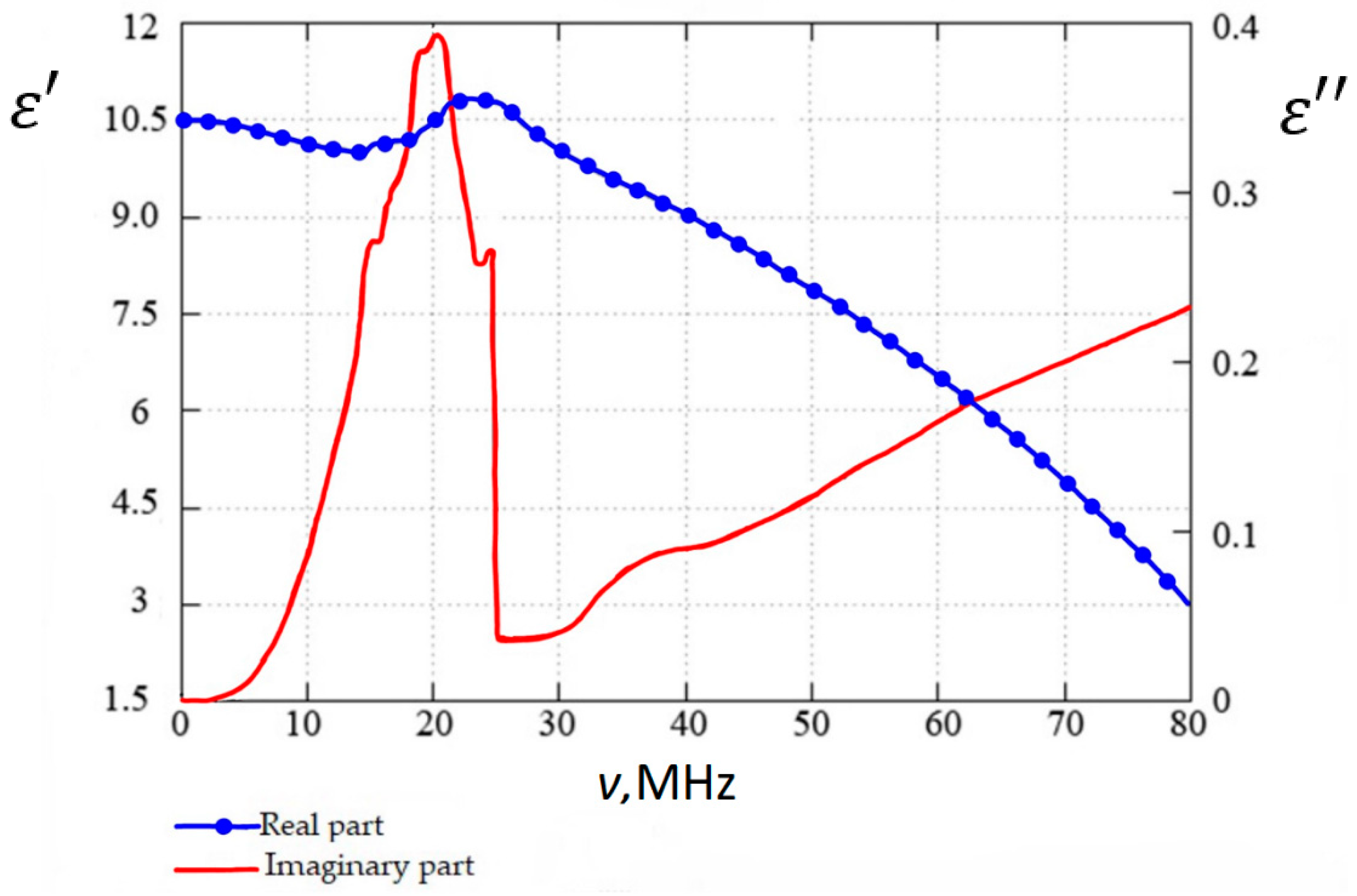
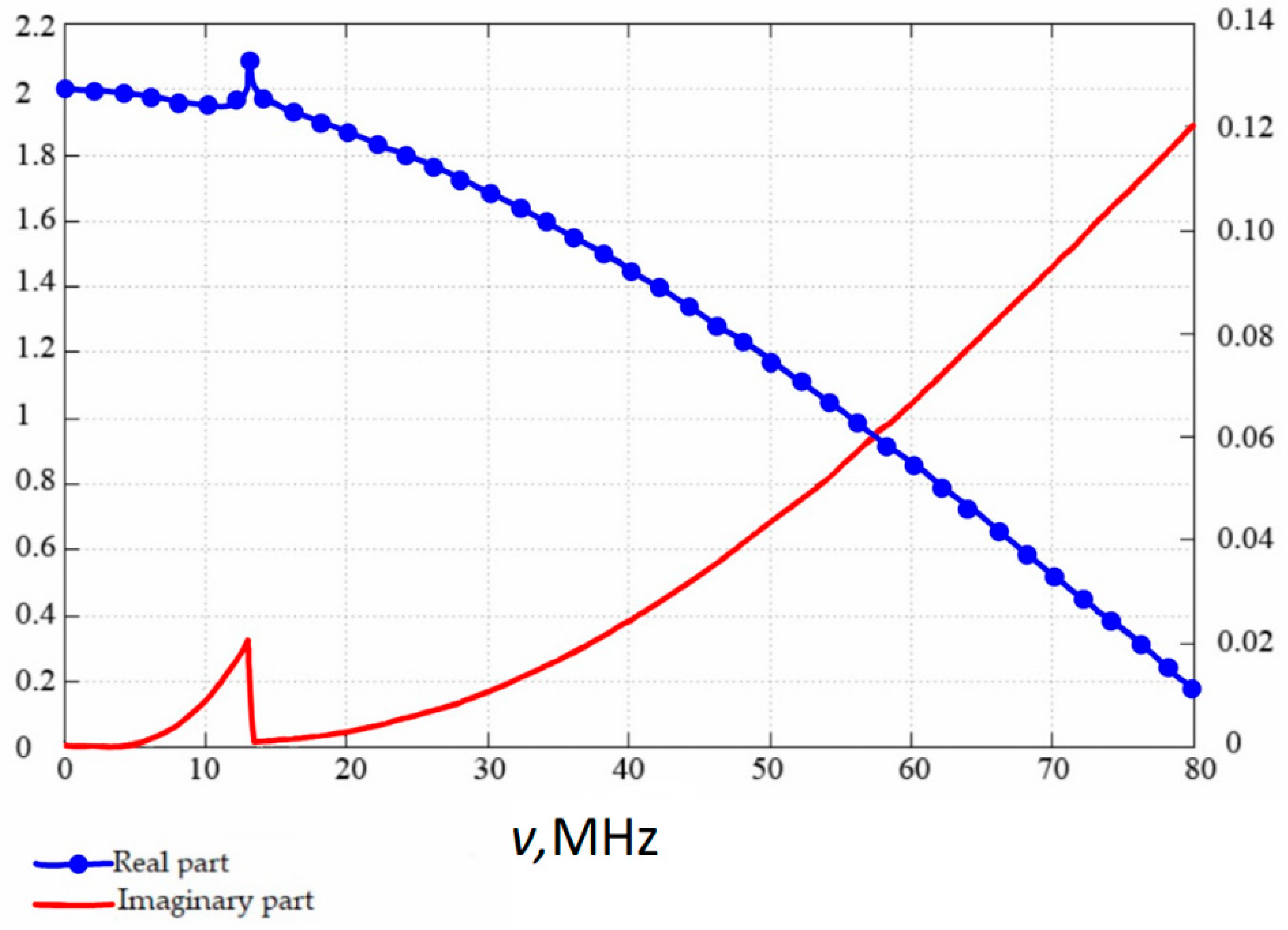


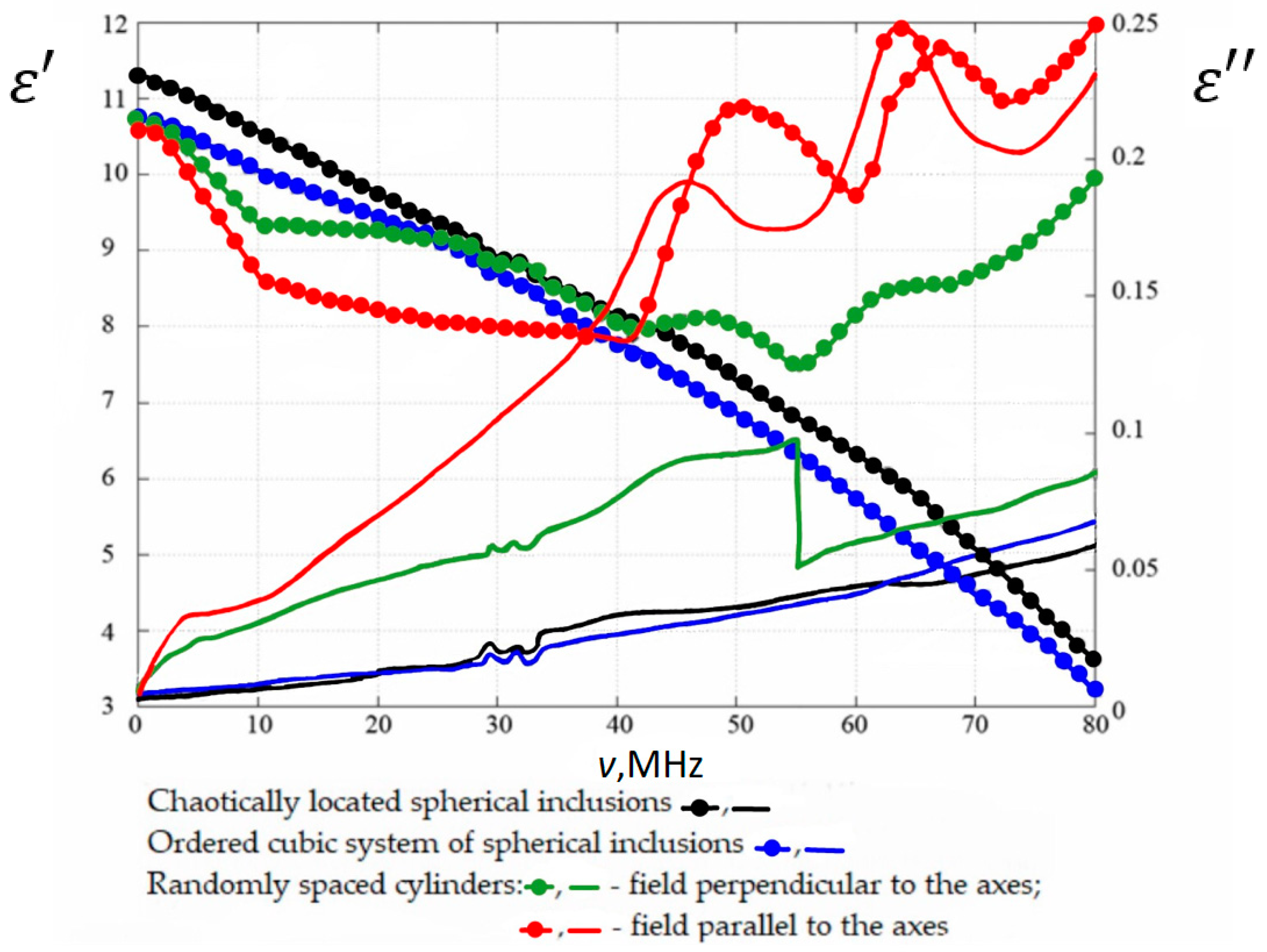
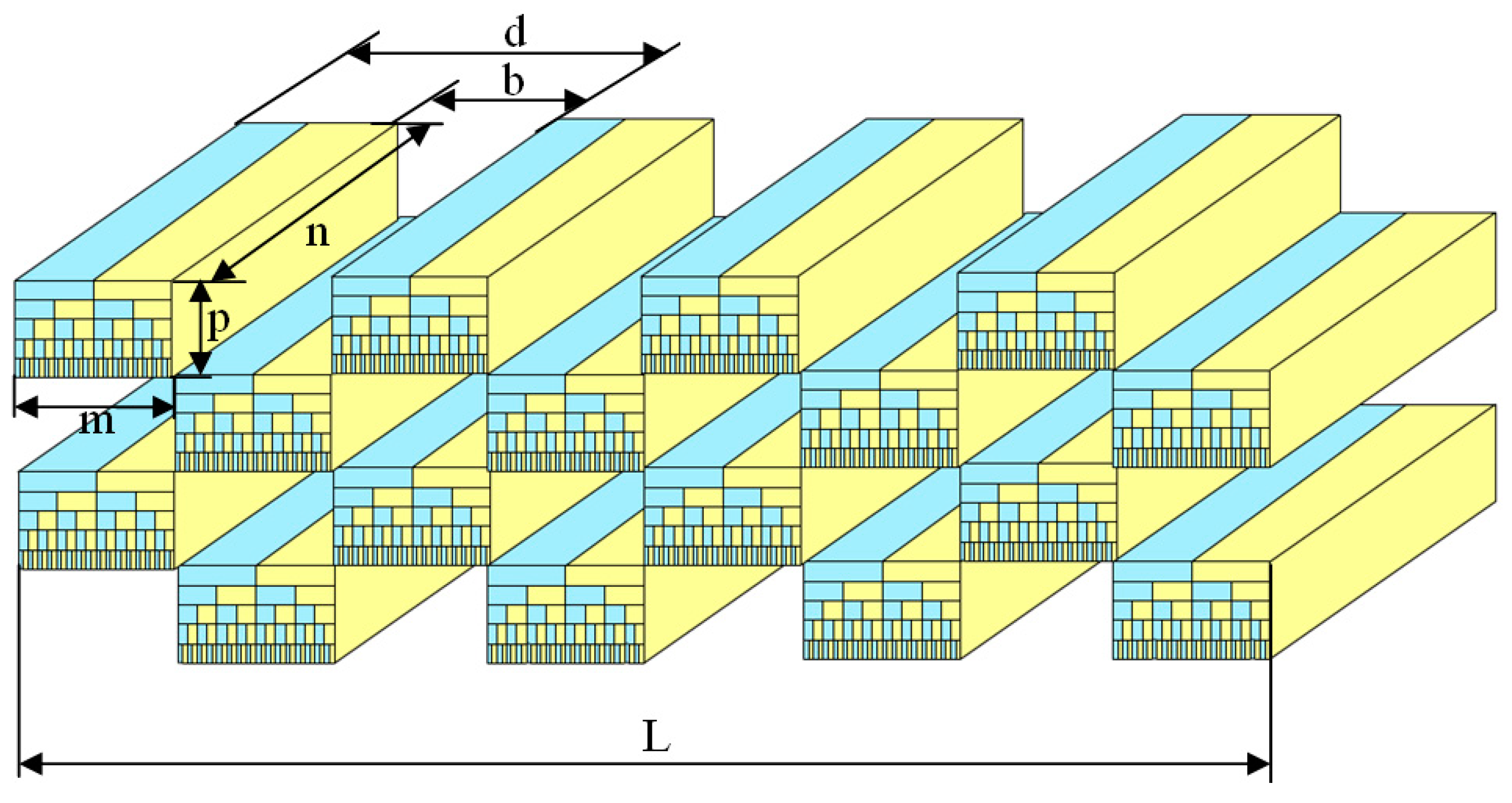
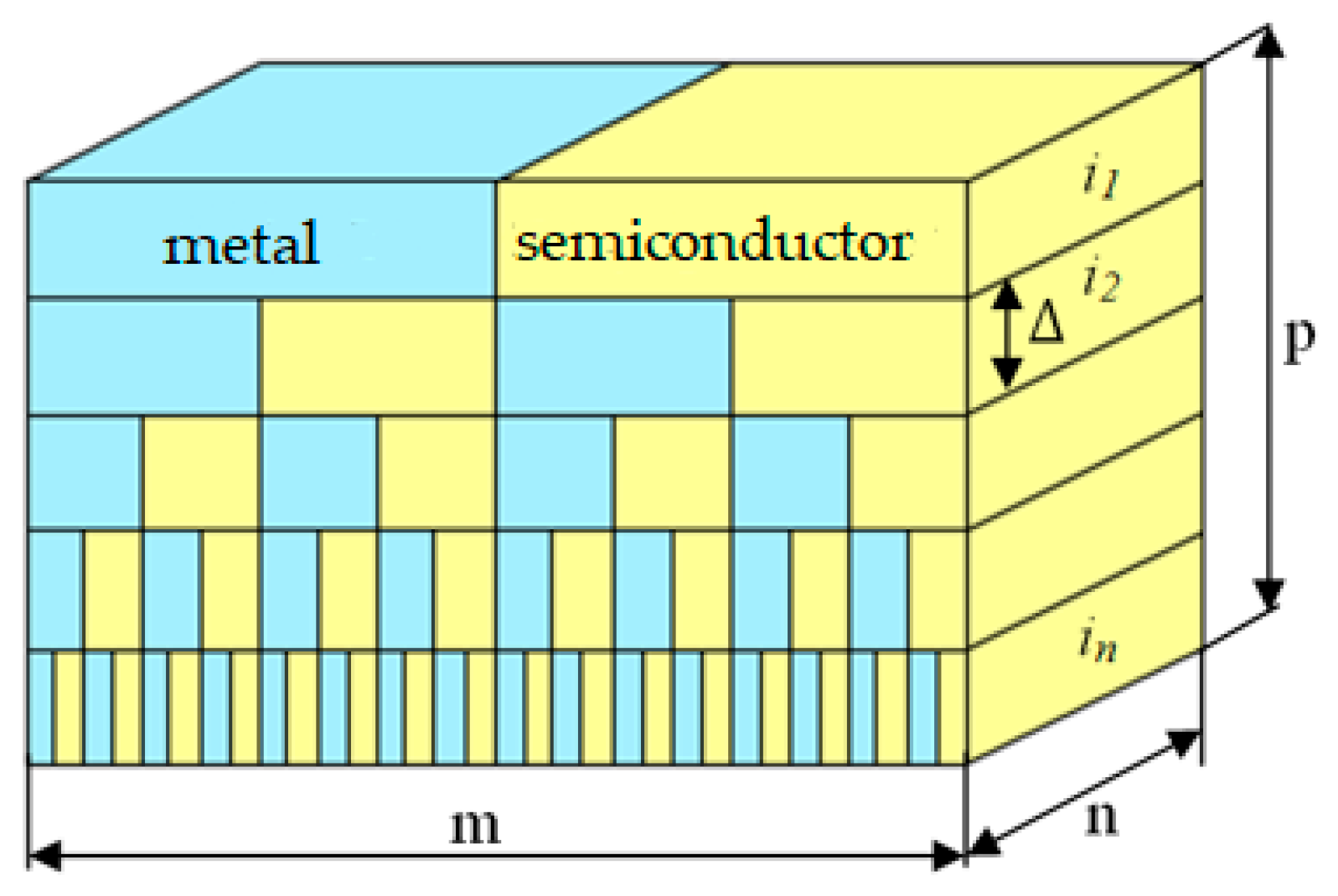

Publisher’s Note: MDPI stays neutral with regard to jurisdictional claims in published maps and institutional affiliations. |
© 2021 by the authors. Licensee MDPI, Basel, Switzerland. This article is an open access article distributed under the terms and conditions of the Creative Commons Attribution (CC BY) license (https://creativecommons.org/licenses/by/4.0/).
Share and Cite
Korchagin, S.; Romanova, E.; Serdechnyy, D.; Nikitin, P.; Baiburin, V.; Yerbayev, Y. Mathematical Modeling of the Electrophysical Properties of a Layered Nanocomposite Based on Silicon with an Ordered Structure. Mathematics 2021, 9, 3167. https://doi.org/10.3390/math9243167
Korchagin S, Romanova E, Serdechnyy D, Nikitin P, Baiburin V, Yerbayev Y. Mathematical Modeling of the Electrophysical Properties of a Layered Nanocomposite Based on Silicon with an Ordered Structure. Mathematics. 2021; 9(24):3167. https://doi.org/10.3390/math9243167
Chicago/Turabian StyleKorchagin, Sergey, Ekaterina Romanova, Denis Serdechnyy, Petr Nikitin, Vil Baiburin, and Yerbol Yerbayev. 2021. "Mathematical Modeling of the Electrophysical Properties of a Layered Nanocomposite Based on Silicon with an Ordered Structure" Mathematics 9, no. 24: 3167. https://doi.org/10.3390/math9243167
APA StyleKorchagin, S., Romanova, E., Serdechnyy, D., Nikitin, P., Baiburin, V., & Yerbayev, Y. (2021). Mathematical Modeling of the Electrophysical Properties of a Layered Nanocomposite Based on Silicon with an Ordered Structure. Mathematics, 9(24), 3167. https://doi.org/10.3390/math9243167







